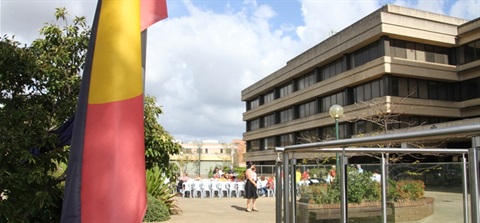Residents urged to reflect on Appin Massacre as memorials announced
Published on 04 March 2019

Campbelltown will remember one of the worst colonial massacres in the state’s history at two ceremonies this month.
It’s estimated at least 14 Dharawal men, women and children died in the Appin Massacre.
On Sunday 14 April a ceremony will be conducted at Cataract Dam, near the site of the massacre, while on Wednesday, 17 April, a flag raising memorial will take place in the forecourt of the Campbelltown City Council civic building.
“It is important we remember the Appin Massacre, both for the tragedy of the lives lost and to ensure that the gravity of this event, and others like it, is properly understood,” said Mayor George Brticevic.
“People living in Campbelltown and throughout the country need to know injustices that have occurred in the past will not be written off as historic footnotes,” Cr Brticevic said.
“While these events happened many years ago the significance of it has had a lasting impact and I would invite people to take a moment to reflect on this tragedy,” he said.
The Winga Myamly Reconciliation Group and the Aboriginal Communities of Macarthur will host the memorial service at 11am to 3.30pm, Sunday 14 April at the Cataract Dam picnic area.
There will be a BBQ at midday followed by the official ceremony at 1pm, which will include a Welcome to Country, a smoking ceremony, an Aboriginal dance performance and official speeches. The service has been held annually since 2000.
The Council memorial will be held 10am to 11am, Wednesday 17 April when flags will be lowered to half-mast for the day. Macarthur elder Aunty Glenda Chalker will present the Welcome to Country before the public service is addressed by the Mayor and a guest speaker.
Background of Appin Massacre
The Appin Massacre on 17 April, 1816, was carried out in reprisal for disputes between white settlers and ordered by the then Governor of New South Wales, Lachlan Macquarie.
To make matters worse, there was no evidence the group of Dharawal people that were targeted had any link to prior clashes in the area.
Documents in the NSW State Government archive record how soldiers attacked the group at their camp at 1am, driving them towards a precipice with gunfire.
While 14 bodies were counted others were believed lost and unaccounted for in the gorge. Only two women and three children survived according to the account of Captain James Wallis, who led the attack.